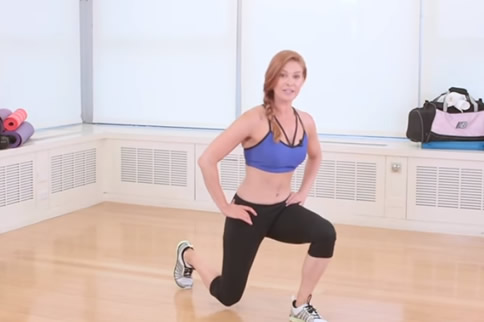服务热线
020-87452929

In exercise, self weight lunge is a famous sport, and self weight lunge is also effective. But if you want to have these benefits, first of all, you have to do it correctly. What are the main points of the correct action of self weight lunge? If you want to know, you can learn the correct answer together.

Main points of correct movement of self weight lunge
1. Stand upright, open your feet as wide as your shoulders, and pinch your waist with both hands. This is the starting position of the action.
2. Step forward with one leg, bend the knees and lower the hips until the knees of the hind legs almost touch the ground. Pay attention to keep the upper body upright and keep the knee of the front leg above the toe.
3. Then use the force from the heel of the front foot to support the body and stand up. At the same time, step forward the hind leg, and repeat the forward lunge squat.
4. Walk forward alternately with legs in the form of lunge and squat. If necessary, turn around until the recommended number of times.
Benefits of self weight lunge
Benefits 1
In order to keep the body in good condition at all times, the legs, buttocks and back must be strong, steady and flexible. Step this movement training can include the practice of these three parts. If the lower back and joints associated with discoid parts of the body (such as elbow, knee, pelvis, hip, etc.) are injured, such as knee joint injury (such as anterior cruciate band and meniscus, patella pain and iliotibial tract syndrome), the pain will be quite severe.
Benefits 2
The causes of these injuries mainly come from the following three aspects: imbalance of strength, weak foundation and lack of flexibility. Of course, these injuries may also be the result of any two or three of the above three problems. There is no doubt that long-term walking training can help you improve strength, stability and flexibility, and reduce the incidence of related diseases.
Benefits 3
The joints involved in this movement training include ankle joint, knee joint and hip joint; the muscle parts involved include leg muscle, gluteus maximus muscle, lower back muscle and abdominal muscle. This exercise can significantly improve the strength of legs and buttocks, improve the overall flexibility, flexibility and balance of the body.